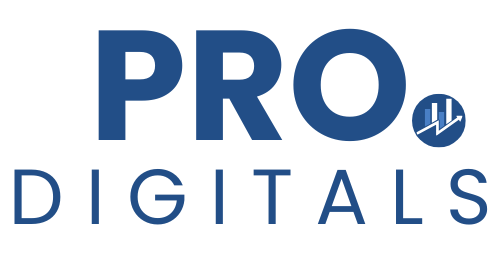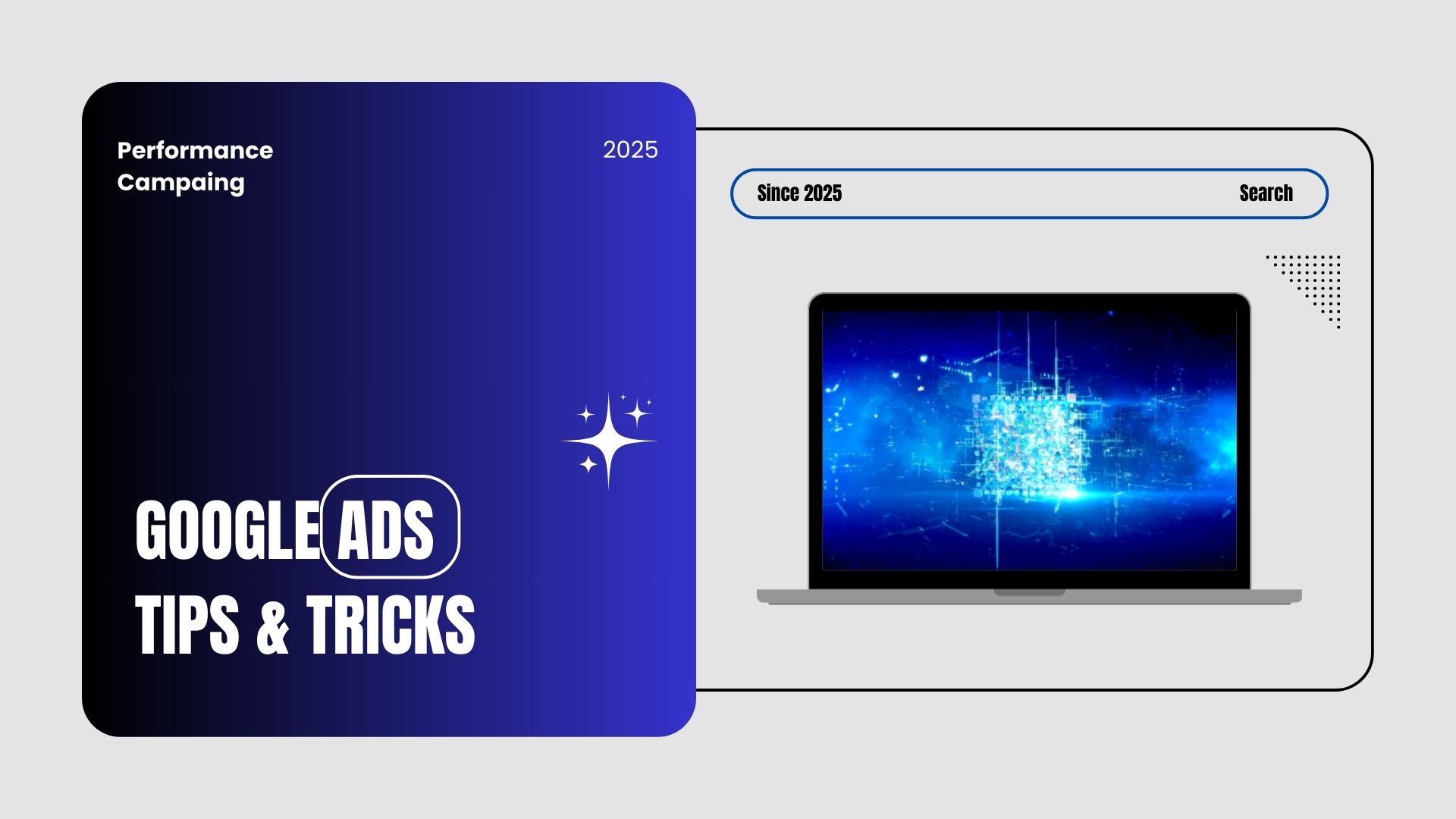Performance Max Campaigns can transform a marketing strategy by seamlessly reaching audiences across multiple Google platforms. These campaigns integrate various advertising tools to deliver a cohesive message, driving performance with remarkable efficiency. Understanding how to optimize Performance Max Campaigns is crucial for maximizing their potential.

Advertisers who invest time in effective setup and optimization see the true benefits. The right combination of targeting strategies, ad creatives, and smart bidding ensure that campaigns reach their desired audiences. Leveraging automation can significantly enhance results, making campaign management both efficient and impactful.
Staying informed and adapting strategies based on performance data is key to success. This dynamic approach keeps campaigns fresh and responsive, ultimately improving results and driving growth.
Key Takeaways
- Optimize setup to improve campaign outcomes.
- Use automation to enhance targeting and bidding.
- Continuously adjust strategies for better performance.
Understanding Performance Max Campaigns

Performance Max Campaigns in Google Ads provide advertisers with a unified and automated approach to reach potential customers across Google’s various platforms. This campaign type leverages Google’s ad inventory, machine learning, and automation to effectively meet specific advertising goals.
Key Features
Performance Max Campaigns allow advertisers to access their entire Google Ads inventory through a single campaign. This integration simplifies management and increases efficiency by consolidating ad efforts across platforms like YouTube, Display, Search, Discover, Gmail, and Maps.
With comprehensive reporting, advertisers can gain insights into their target audience’s behavior, allowing them to tailor strategies more precisely. Another key feature is dynamic ad creation, which uses existing assets to automatically generate and rotate ads, optimizing performance based on real-time data.
Campaign Goals
Performance Max Campaigns are designed to focus on achieving specific goals, such as increasing conversions, driving online sales, or promoting in-store visits. Advertisers can set these as primary targets to tailor their campaigns towards desired outcomes.
By selecting particular objectives, the algorithms can utilize data-driven insights to help maximize the return on investment. Advertisers benefit from precise targeting, ensuring their ads reach the most relevant audience segments, increasing the likelihood of successful campaign outcomes.
Machine Learning and Automation
A significant advantage of Performance Max Campaigns is their use of machine learning to enhance ad targeting and delivery. Google’s algorithms analyze user behavior and ad performance data in real time to make smart decisions on when and where to show each ad.
Automation streamlines the optimization process, allowing campaigns to adapt quickly to changes in the market or user interests. This AI-driven approach not only minimizes manual effort but also improves the overall effectiveness of the ads, ensuring they meet pre-defined goals with greater accuracy.
Setting Up Your Performance Max Campaign

Effectively setting up a Performance Max campaign involves understanding the account structure and efficiently allocating the budget. Getting these components right can lead to improved campaign performance and better results.
Account Structure
Establishing an organized account structure is essential for any Performance Max campaign. It begins with selecting clear campaign objectives, which guide the entire process. Clear objectives ensure alignment with business goals. Choose a campaign type and name that reflects these goals, ensuring easy identification.
Setting up conversion tracking is also crucial. It helps measure campaign success accurately. Marketers should also use asset groups effectively. These groups include headlines, images, and descriptions that align with campaign goals.
Organizing campaigns by themes or product lines can enhance focus. This structure simplifies tracking and performance analysis. Using multiple asset groups within a campaign allows testing different creatives and messages. It is a key strategy in optimizing performance over time.
Budget Allocation
Allocating the right budget ensures sufficient resources for campaigns. Determining an appropriate budget depends on campaign goals and available resources. It’s important to assess past campaigns to understand spending patterns.
Employing a flexible approach to budgeting is beneficial. This involves testing initial budgets and adjusting based on results. It enables better resource allocation over time. Allocating more budget to high-performing areas can lead to improved returns.
Consider Google’s recommendation to run campaigns for at least six weeks. This allows algorithms to adapt and optimize performance. By setting clear budget objectives, marketers can achieve better outcomes. Use historical data effectively to inform decisions and refine strategies periodically.
Targeting and Audience Selection
Targeting and audience selection in Performance Max campaigns ensure that ads reach the most relevant users. By utilizing Audience Signals and Custom Segments, campaigns align with business goals and achieve greater efficiency.
Audience Signals
Audience signals help guide Google’s machine learning in identifying users likely to convert. Advertisers can input data such as demographic details, interests, and past interactions. This information helps the system predict which audiences are most receptive.
For example, advertisers might target users who previously visited related sites or showed interest in similar products. By indicating these signals, campaigns become more efficient over time, focusing on potential customers. This approach not only saves resources but also improves conversion rates as it aligns with the strategies outlined by experts.
Custom Segments
Custom segments allow advertisers to define their audience more precisely based on specific behaviors and characteristics. This feature utilizes unique data points to identify relevant audience groups.
For instance, advertisers can group users who searched for certain keywords or visited competitor websites. This focused targeting enhances the likelihood of engagement, tailoring ads to match user intent. Utilizing custom segments makes campaigns more relevant and personal to the target users, aligning them with particular marketing goals. For more detailed insights, one can refer to the official support guide for optimization tips.
Crafting Compelling Ad Creative
Creating engaging ad creative is central to driving the success of Performance Max campaigns. Effective ads capture attention and motivate action through smart use of formats and assets.
Ad Formats
Different ad formats cater to varied user preferences and display environments. It’s crucial to choose formats that align with campaign goals. Display ads are visually appealing, making them suitable for awareness campaigns. Video ads, which use motion to engage audiences, perform well on platforms like YouTube. On the other hand, search ads focus on text and are effective in meeting direct user queries.
Interactive formats, like carousel ads, allow multiple pieces of content in one ad, offering flexibility in storytelling. Utilizing the right ad format enhances user engagement and helps in meeting specific advertising objectives.
Creative Assets
Creative assets should communicate the message clearly and align with the brand’s identity. Images must be high-quality, impactful, and relevant to the target audience. Videos should be concise but informative, capturing core messages in the first few seconds to maintain viewer interest.
Headlines and descriptions play a crucial role in ad effectiveness. They must be compelling and straightforward, encouraging users to click and learn more. Logos and branding elements should be consistently used to build brand recognition. Regularly updating these assets to keep the content fresh can also improve campaign results, as fresh content keeps the audience engaged and interested.
Leveraging Automation and Smart Bidding
Google Ads offers robust tools like automation and smart bidding to enhance the efficiency of Performance Max campaigns. These tools harness the power of machine learning to optimize bids and improve conversion rates, allowing advertisers to achieve better results with precision and efficiency.
Bid Strategies
Smart bidding strategies use machine learning to optimize bids for conversions. These strategies consider multiple factors like user device, location, and time to adjust bids in real-time. Some popular smart bidding strategies include Target CPA and Target ROAS. Target CPA (Cost Per Acquisition) focuses on getting conversions at a set cost, while Target ROAS (Return on Ad Spend) aims to maximize the revenue earned from every dollar spent.
It’s crucial to choose the right bid strategy to align with campaign goals. For example, the Target CPA strategy is ideal for advertisers focused on acquiring leads, whereas Target ROAS suits those who prioritize income generation. Leveraging automated bidding strategies can significantly improve performance by tailoring bids according to specific needs, thereby saving time and optimizing resources effectively.
Conversion Tracking
Conversion tracking is vital to assess the success of Performance Max campaigns. By tracking actions such as purchases, lead form submissions, or app installations, advertisers can determine the efficacy of their campaigns. Setting up proper conversion tracking can be done in the Google Ads interface, where each action is given a unique tag to track.
Having accurate conversion tracking enables the fine-tuning of smart bidding strategies. It provides data that helps assess the impact of various elements on conversions, further enhancing the precision of automated campaigns. Effective use of insights from conversion tracking allows for continuous improvement, keeping campaigns aligned with business objectives and optimizing returns.
Optimizing Ad Assets for Performance
Optimizing ad assets in Performance Max campaigns involves creating variations and analyzing performance data. Crafting diverse assets and utilizing detailed insights are essential steps.
Asset Variations
Creating various ad asset types ensures effective audience engagement. Successful campaigns often feature a mix of text, images, and videos to appeal to different audience segments. Advertisers can test various headlines and descriptions to determine which combinations yield the highest conversion rates. By regularly updating assets with fresh content and creative strategies, advertisers can maintain user interest and improve ad relevance.
Responsive ad formats allow the system to automatically test different variations. This method helps in identifying the most effective combinations that drive better results. By implementing varied asset strategies, advertisers can maximize ad relevance and performance, making sure their messages resonate with diverse audience preferences.
Performance Insights
Measuring ad asset performance is crucial for optimizing campaigns. Advertisers should analyze metrics like impressions, clicks, and conversion rates to evaluate effectiveness. Using performance insights can help identify which assets are driving success and which need adjustments. Tools like Google Ads provide detailed reports that aid in understanding asset performance.
Regularly reviewing these insights enables advertisers to make informed decisions about future asset strategies. By identifying high-performing assets, they can focus on boosting these elements while discontinuing or reworking underperforming ones. This data-driven approach ensures that advertisers allocate resources effectively, enhancing campaign efficiency and achieving conversion goals.
Monitoring Campaign Performance
To effectively monitor campaign performance, it is crucial to focus on key metrics and use the right reporting tools. Understanding these elements ensures that campaigns are on track and any necessary adjustments can be made promptly.
Key Metrics
Key metrics provide essential insights into how well a Performance Max campaign is doing. Conversion rates are especially important as they indicate how many users are taking the desired action, such as purchasing a product or signing up for a newsletter. Tracking click-through rate (CTR) helps measure engagement, showing how often ads result in clicks.
Return on ad spend (ROAS) is vital for understanding the financial effectiveness of a campaign. Impressions tell how often the ad is shown, while cost per click (CPC) gives insight into spending efficiency. By regularly reviewing these metrics, advertisers can ensure that their campaigns achieve optimal results.
Reporting Tools
Using the right reporting tools is crucial for in-depth performance analysis. Google Ads provides built-in features to track the success of Performance Max campaigns. Advertisers can use the Google Ads interface to set up customized reports, allowing them to focus on the metrics most relevant to their goals.
Other tools like Google Analytics can be integrated to provide a broader view, combining insights from multiple sources. These tools help in assessing performance trends over time, identifying areas for improvement, and ensuring that the campaign remains aligned with business objectives. Regular use of these tools keeps advertisers informed and ready to make data-driven decisions.
A/B Testing and Experimentation
A/B testing and experimentation in Google Ads Performance Max campaigns are crucial for optimizing results and making data-driven decisions. A successful test setup involves careful planning, while interpreting test results requires attention to detail and precision.
Test Setup
Setting up A/B tests is an important step in evaluating different elements of a campaign. To begin, choose a specific aspect of the campaign to test, such as ad copy, visuals, or audience segmentation. This focused approach allows for clear insights into what impacts performance.
Creating distinct test groups is essential. Each group should only differ by one variable to ensure accurate results. For example, test two different headlines while keeping other elements constant. This method helps identify which change drives more conversions or engagement.
It is also important to set parameters, like the duration of the test and the metrics to measure. A little planning ensures that the test will provide meaningful data. Use Performance Max experiments for straightforward A/B testing within Google Ads, making it easier to refine various elements systematically.
Interpreting Test Results
Interpreting test results involves analyzing collected data to determine which variant performs better. Key metrics to focus on might include click-through rate, conversion rate, or return on ad spend. Compare these metrics between the control and test groups to draw conclusions.
It is important to consider statistical significance. This ensures that the observed differences are not just due to chance. Tools within the Google Ads platform or third-party analytics can assist in determining this.
After analyzing the data, apply the insights to optimize the campaign. If one version shows a significant increase in performance, consider adopting it across campaigns. A rigorous approach to experimentation informs better decisions and enhances overall campaign success.
Scaling Your Campaigns
Scaling Performance Max campaigns is crucial to improve reach and impact. Key strategies include strategic expansion and budget adjustments. These methods help in managing growth effectively while maintaining efficiency.
Strategic Expansion
Strategic expansion is an important part of scaling. It focuses on increasing campaign reach by exploring new markets and audiences. Analyzing current performance data helps identify potential areas for growth. Using robust analytics, marketers can target regions or demographics with higher engagement rates.
Another tactic is expanding keyword lists. Adding new, relevant keywords can attract more traffic to the campaign. Additionally, refining ad creatives and exploring different formats for various platforms helps capture diverse audience preferences. This requires ongoing testing to see what resonates best, ensuring the expansion efforts are effective and sustainable.
Budget Adjustments
Budget adjustments are key to scaling campaigns efficiently. Evaluating the current budget allocation allows marketers to determine if resources are being used optimally. They can then adjust spending to focus more on high-performing segments. Increasing the budget in areas with good returns can lead to higher conversions and improved campaign performance.
Implementing automated bidding can also enhance budget management. This allows for responsive adjustments to real-time changes in the competitive landscape. Regular reviews of the financial performance can highlight areas needing changes, ensuring funds drive the best possible results. Balancing budget with projected growth is essential for long-term campaign success.
Advanced Optimization Techniques
Advanced optimization techniques for Performance Max campaigns include strategies like bid and seasonality adjustments. These tactics can significantly improve campaign performance by making data-driven modifications that adapt to changing conditions and opportunities.
Bid Adjustments
Bid adjustments are vital for targeting the right audience. By modifying bids based on device types, locations, and customer behaviors, advertisers can ensure their ads reach the most potential customers. For instance, increasing bids for mobile devices when data shows higher conversion rates can maximize ROI.
Advertisers can also use automated bid strategies. This reduces manual work and allows for constant fine-tuning based on real-time data. Regular analysis and adjustment according to performance metrics, like cost per acquisition and click-through rates, are essential to maintaining effectiveness.
Seasonality Adjustments
Adjustments for seasonality help campaigns align with consumer behavior changes throughout the year. These adaptations are crucial during peak times, such as holidays, when consumer interest may spike.
Advertisers can prepare by analyzing past performance data to predict shifts in demand. With tools that adjust bids or allocate budget during these key periods, they can enhance the visibility and effectiveness of their ads. It’s crucial to review these changes post-season to gather insights for future campaigns. A good reference on how to implement these techniques is the Performance Max Campaign Optimization guide.
Continuous Learning and Improvement
Continuous learning is key to optimizing Performance Max campaigns. Staying updated on industry trends and conducting competitive analysis ensures better strategic decisions.
Industry Trends
Keeping up with industry trends helps marketers align campaigns with the latest digital marketing practices. By reading up-to-date marketing blogs and attending webinars, they can gather valuable insights into new technologies and tools.
Engaging in online communities or forums also helps exchange ideas and experiences. Marketers can follow reliable websites for expert-backed insights that help improve campaign strategies. Understanding changes in consumer behavior and technology can offer new ways to improve ad performance. Regularly checking industry news ensures that their strategies are cutting-edge and relevant to current market dynamics.
Competitive Analysis
Competitive analysis is crucial for understanding rival campaigns and refining one’s own strategies. By examining competitor tactics, marketers can identify gaps and potential areas for enhancement. Using tools for digital marketing analytics, they gain insights into competitor keywords, ad copy, and overall performance.
Tracking competitor performance over time can highlight trends and shifts in the market landscape. Analyzing competitor ads allows marketers to refine their messaging and differentiate their offerings. Utilizing insights from competitive analysis helps improve ad efficiency and bolster campaign success. Marketers can implement changes that lead to improved results by learning from their competitors’ strengths and weaknesses.

